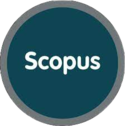Identification of Mobile Phone Usage's Shifting Among Students
DOI:
https://doi.org/10.18592/tarbiyah.v9i2.3519Abstract
This study aims to identify the use of mobile phones in SMAN 1 Pangalengan. The survey was conducted on 100 students. Data collection using a questionnaire. Data analysis uses quantitative descriptive methods. The results showed students tend to utilize social media such as Facebook, Instagram, and WhatsApp. Other uses for browsing, gaming, and entrepreneurship. Survey results show that 92% of students use WhatsApp to communicate and 82% of students use mobile phones to access social media. This shows the pattern of mobile phone use has shifted among students although basically, it does not change the main function.References
Akinlosotu, T. (2016). Predictors of WhatsAPP ‘Consumption’ among undergraduate students of Economics in Ambrose Alli University, Ekpoma. African Research Review, 10(3), 290. https://doi.org/10.4314/afrrev.v10i3.19
Al-Dheleai, Y. M., & Tasir, Z. (2017). Using facebook for the purpose of students’ interaction and its correlation with students’ academic performance. Turkish Online Journal of Educational Technology, 16(4), 170–178.
Chaudhury, P., & Tripathy, H. K. (2018). A study on impact of smartphone addiction on academic performance. International Journal of Engineering and Technology(UAE), 7(2), 50–53. https://doi.org/10.14419/ijet.v7i2.6.10066
Hasanah, N., & Kumalasari, D. (2015). Penggunaan Handphone dan Hubungan Teman Pada Prilaku Sosial Siswa SMP Muhammadiyah Luwuk Sulawesi. Harmoni Sosial, 151(1), 10–17. https://doi.org/10.1145/3132847.3132886
Huang, Y. T., & Su, S. F. (2018). Motives for instagram use and topics of interest among young adults. Future Internet, 10(8). https://doi.org/10.3390/fi10080077
Indraswati, D., Marhayani, D. A., Sutisna, D., Widodo, A., & Mauilida, M. A. (2020). critical thinking dan problem solving dalam pembelajaran ips untuk menjawab tantangan abad 21. Sosial Horizon, Jurnal Pendidikan Sosial, 7(1), 12–28. Diambil dari https://journal.ikippgriptk.ac.id/index.php/sosial/article/view/1540
Istiyanto, S. B. (2016). TELEPON GENGGAM DAN PERUBAHAN SOSIAL Studi Kasus Dampak Negatif Media Komunikasi dan Informasi Bagi Anak-Anak di Kelurahan Bobosan Purwokerto Kabupaten Banyumas. Jurnal Komunikasi Ikatan Sarjana Komunikasi Indonesia, 1(1), 58. https://doi.org/10.25008/jkiski.v1i1.36
Jordaan, Y., & VanHeerden, G. (2017). Online privacy-related predictors of Facebook usage intensity. Japanese Journal of Radiological Technology, 70(5), 90–96. https://doi.org/10.6009/jjrt.KJ00003534360https://doi.org/10.1016/j.chb.2016.12.048
Kaya, T., & Bicen, H. (2016). The effects of social media on students’ behaviors; Facebook as a case study. Computers in Human Behavior. https://doi.org/10.1016/j.chb.2016.02.036
Kootbodien, A., Prasad, N. V., & Ali, M. S. B. S. (2018). Trends and impact of WhatsApp as a mode of communication among Abu Dhabi students. Media Watch, 9(2), 257–266. https://doi.org/10.15655/mw/2018/v9i2/49380
Lima Ribeiro, J. da C., Reis Nunes, R. dos, & Rocha Amorim, R. J. (2017). The Use of Cell Phones in School: Hybridization of Knowledge and Teaching Practices. Creative Education, 08(12), 1968–1990. https://doi.org/10.4236/ce.2017.812134
Marsal, A., & Hidayati, F. (2017). Pengaruh Smartphone Terhadap Pola Interaksi Sosial Pada Anak Balita Di Lingkungan Keluarga Pegawai Uin Sultan Syarif Kasim Riau. Jurnal Ilmiah Rekayasa dan Manajemen Sistem Informasi, 3(1), 78–84.
Naqshbandi, M. M., Ainin, S., Jaafar, N. I., & Mohd, S. N. L. (2017). To Facebook or to Face Book? An investigation of how academic performance of different personalities is affected through the intervention of Facebook usage. Computers in Human Behavior, 75, 167–176. https://doi.org/10.1016/j.chb.2017.05.012
Pittman, M., & Reich, B. (2016). Social media and loneliness: Why an Instagram picture may be worth more than a thousand Twitter words. Computers in Human Behavior, 62, 155–167. https://doi.org/10.1016/j.chb.2016.03.084
Rajini, S., Kannan, K., Alli, P., & Tamilaevi, V. (2018). Study on Prevalence of Whatsapp Addiction among Medical Students in A Private Medical College, Pondicherry. Indian Journal of Public Health Research and Development, 9(7), 113–116. https://doi.org/10.5958/0976-5506.2018.00637.X
S Mulyanta, E. (2005). Kupas Tuntas Telepon Seluler Anda. Yogyakarta: ANDI.
Sheldon, P., & Bryant, K. (2016). Instagram: Motives for its use and relationship to narcissism and contextual age. Computers in Human Behavior, 58, 89–97. https://doi.org/10.1016/j.chb.2015.12.059
Singh, N., Singh, N. P., Kharya, P., Shukla, S., Singh, V., & Raj Singh, D. (2019). Whatsapp addiction: assessing pattern of Whatsapp usage and its impact on medical students at U.P.U.M.S., Saifai, Etawah, India. International Journal Of Community Medicine And Public Health, 6(6), 2505. https://doi.org/10.18203/2394-6040.ijcmph20192312
Sugiono. (2013). Metode Penelitian Pendidikan (Pendekatan Kuantitatif, Kualitatif, dan R&D). Bandung: Alfabeta.
Supriatno, D., & Romadhon, I. (2017). Pengaruh Media Komunikasi Smartphone Terhadap Interaksi Sosial Pelajar (Studi Deskriptif Kuantitatif pada Pelajar SMK Astra Nawa Ambulu). Paradigma Madani, 4(2), 65–74.
Widodo, A., Indraswati, D., & Sobri, M. (2019). Analisis Nilai-Nilai Kecakapan Abad 21 Dalam Buku. Jurnal Tarbiyah: Jurnal Ilmiah Kependidikan, 8(2), 125–133. https://doi.org/10.18592/tarbiyah.v8i2.3231
Downloads
Published
How to Cite
Issue
Section
License
Authors retain copyright and grant the journal right of first publication with the work simultaneously licensed under a Creative Commons Attribution 4.0 International License that allows others to share the work with an acknowledgment of the work's authorship and initial publication in this journal.




